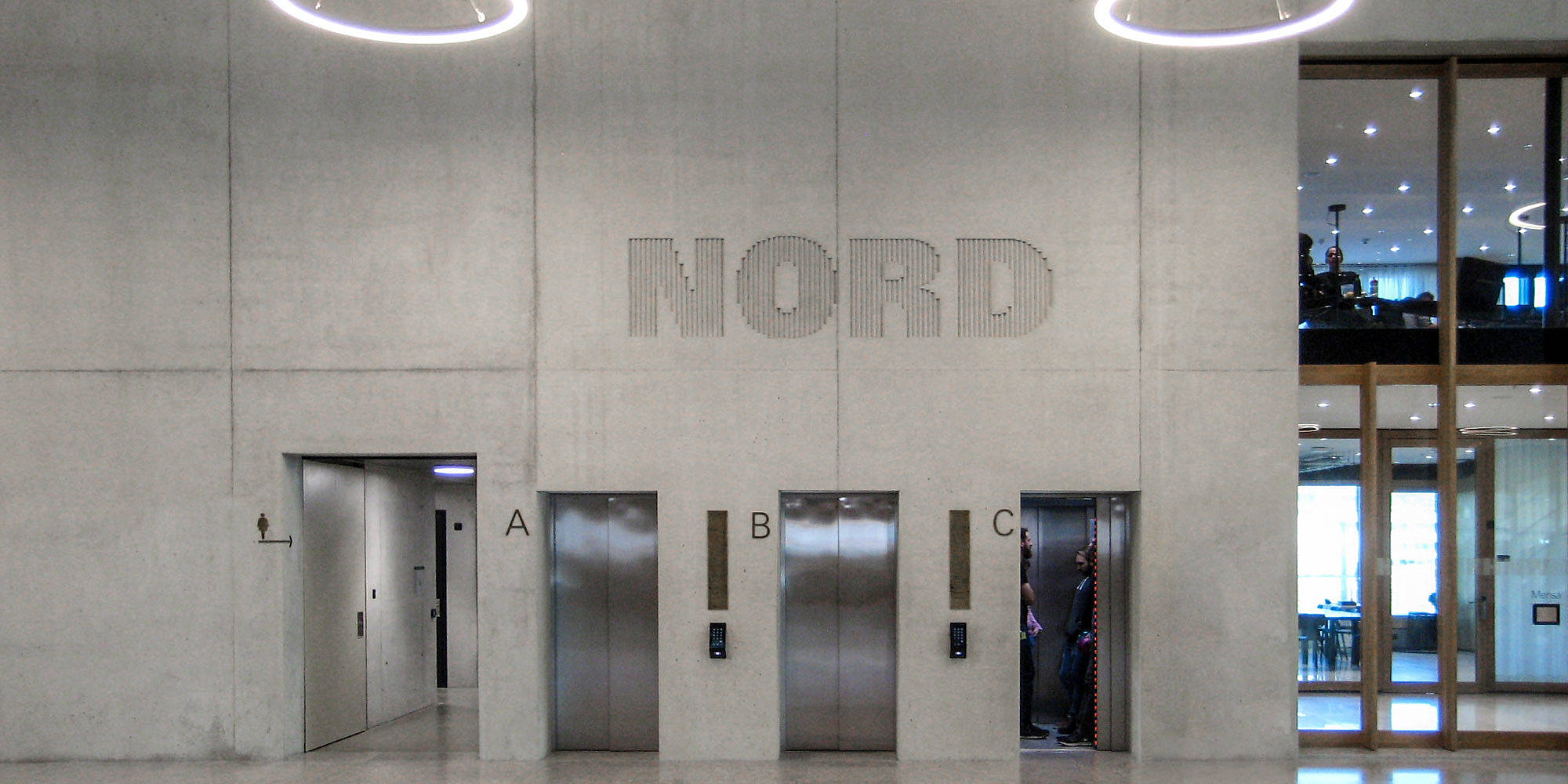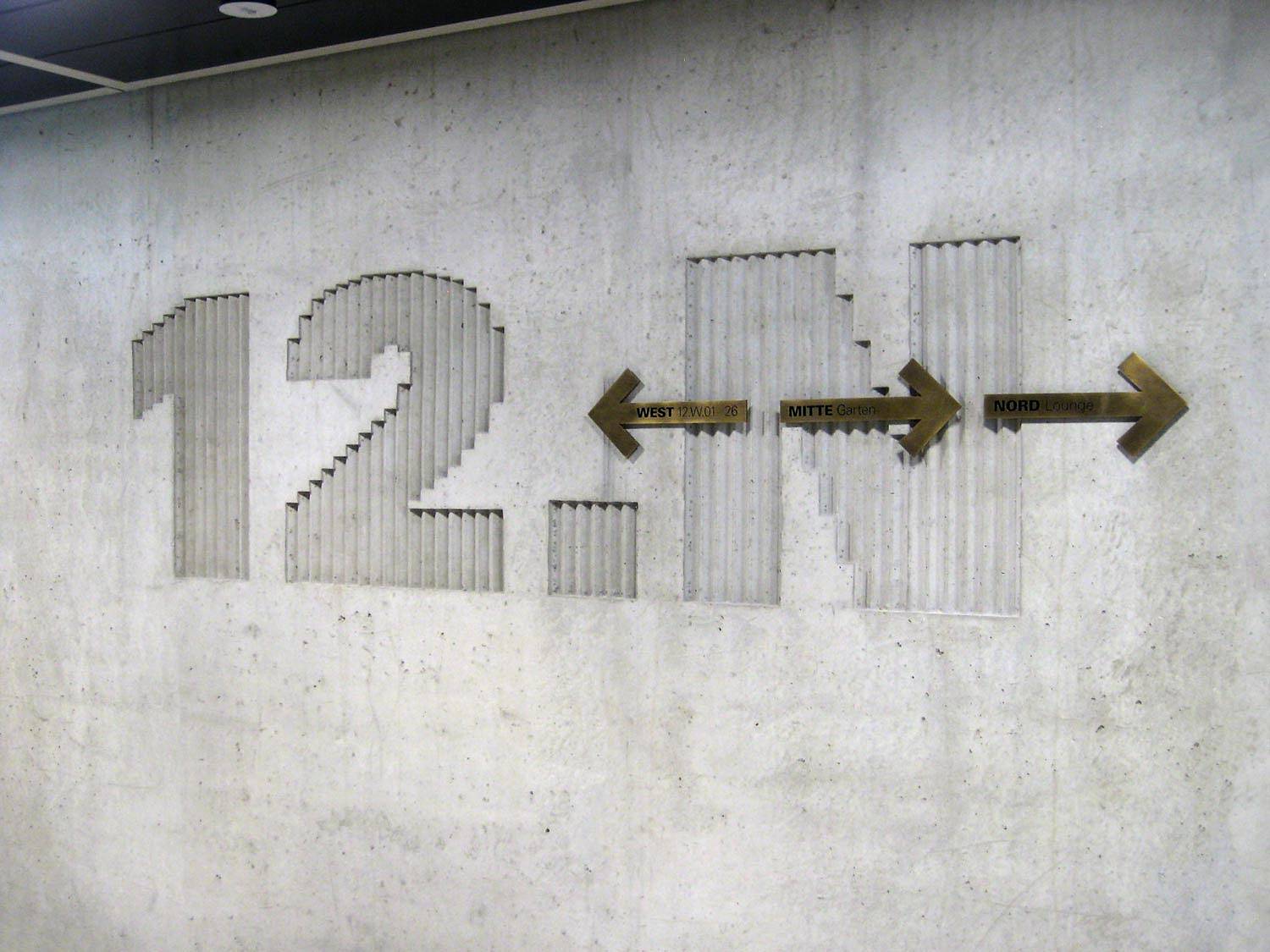FHNW Campus Muttenz, Basel, Switzerland
Instead of signs, locational information in the concrete facilitate the orientation at the FHNW campus. The letters were embossed into the concrete using structured formliners.
The University of Applied Sciences Northwestern Switzerland (FHNW) offers education and training in the fields of architecture, life sciences, education, social work and mechatronics. Around 4,800 people study and work at the campus in Basel.
After four years of construction, the site opened in the fall semester of 2018. The new building was planned by the Swiss office pool architects. They designed a 60-meter-high cubic structure, which sets a clear vertical accent in the urban landscape. The individual areas of use can be anticipated from the outside: generous windows open up the view of the library, seminar and classrooms, laboratories and technical areas.
Upon entering, there is a generous atrium with six dominant staircases that diagonally traverse the entrance area, criss-crossing over three floors. Light gray exposed concrete and pale natural wood as well as clever lighting accents create a welcoming atmosphere. Above the library floor, pool architects incorporated a central rider, above which the building extends upwards for a further nine stories. Two atria provide enough natural light in this area; the various institutes are arranged around them.
An orientation system makes it easier for students and visitors to navigate between the central areas of the university of applied sciences – reception, canteen, auditorium, lecture halls and seminar rooms – and the individual institutes. For the signage, the architects opted for a solution that is both visual and tactile: The cardinal directions of the wings on each story and individual floor designations are embossed in the concrete in a ribbed structure.

The design was executed by the Swiss construction company Anliker. Signage can be implemented in concrete with wood or single-use polystyrene foam molds, however with mixed results: Precise embossing of letters or details in the concrete is not easy to achieve with a rigid material such as wood or fast-breaking polystyrene. After initial attempts with wood failed, Anliker approached RECKLI in October 2015 with the question of whether flexible, structured formliners would be suitable for the project. Thanks to their elasticity, formwork inlays are very well suited for molding exposed concrete and concrete façades, firstly because they can accurately reproduce detailed structures and secondly, because they can easily be removed from the hardened concrete, thanks to their rubbery texture.
The project was on a tight schedule: the construction company wanted to receive the first batch of formliners before the end of the year. In consultations with RECKLI area manager Elmar Pallasch, a ribbed structure was chosen for the orientation system, which was used to characterize the letters in the concrete.
The production team in Herne had to pay special attention to the backs of the formliners. Since Anliker wanted to nail the matrices onto the formwork, the formliner backs were reinforced with wood. At the same time, the back could not be thicker than 8 millimeters; as a solution, plywood was used. The wood was sealed to prevent swelling on contact with liquid, which could warp the wood and therefore the formliner.
Furthermore, it was necessary to guarantee the exact reproduction of the letter pattern and to avoid minimal concrete breakage at the edges. For this, the wooden positive models on which the formliners are cast were sanded twice and sealed to create a particularly smooth surface on the formliners. In total, RECKLI delivered 64 matrices in three partial deliveries to the construction company in Switzerland to enable Anliker to work quickly and efficiently.
